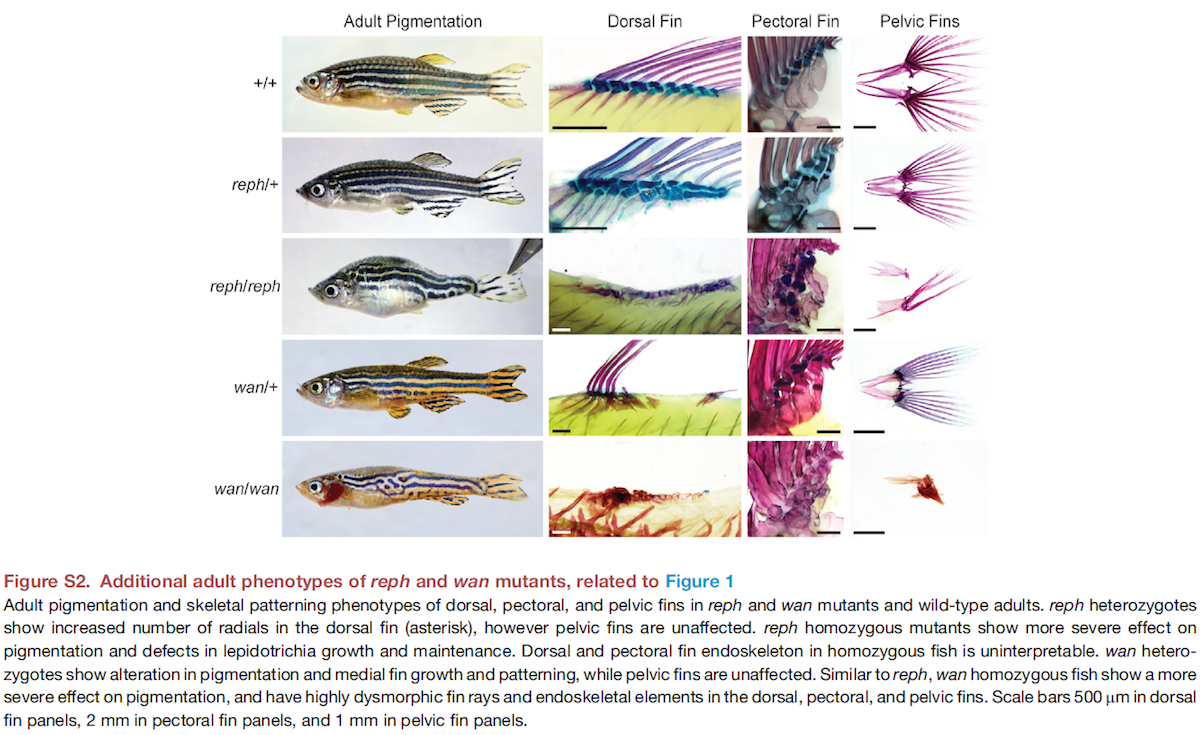Fin-To-Limb” Paper Shows Destructive Nature of “Evo-Devo” Mutations
- Casey Luskin
Yesterday I wrote a post with critiques of a 2021 Cell paper, “Latent developmental potential to form limb-like skeletal structures in zebrafish.” That was in the context of responses from Brian Miller and myself (here, here, here, and here) to a review of Return of the God Hypothesis, for BioLogos. The research purported to produce extra bones in a fish fin by mutating developmental genes. The reviewer, biologist Darrel Falk, argued that these bones are “likely the equivalent of the radius and ulna” from a tetrapod limb. Yet the paper itself stated, “[W]e cannot assign a homology relationship between intermediate radials and any specific element of the limb.”
A Friend Notes
A reader of Evolution News makes another noteworthy point about why this paper does not demonstrate the evolution of fins into limbs:
Dr. Falk thinks that showing how fins can become limbs is enough to show that new body plans can appear by analogy. He cites the study you discussed to show that mutations in developmental genes can produce new patterns in short steps, but in fact, that study shows exactly what you and Meyer and a lot of ID proponents have been saying long time ago: these kinds of mutations will be catastrophic on the organisms as a whole and the systems they occur in them in particular!
The mutations that produced the two extra bones are a very good example. They were so destructive (see Figure S2 of the paper) that the authors chose not to study these fishes in a homozygotic form but in heterozygotic form. They say:
“The overall pattern and size of the fin rays are not dramatically altered. We named this mutant rephaim (reph). The mutant phenotype exhibits varied expressivity and dose sensi- tivity, as homozygous fish are highly dysmorphic (Figure S2). Due to the severity of the homozygous condition, we have focused our analysis on heterozygous reph mutants (reph/+).” (Emphasis added.)
This point refutes Falk’s claim and it reinforces our position that mutations to developmental genes are no good solution to the novelty problem.
Not Functional in Nature
The reader makes some good points. Looking at Figure S2 from the paper (below), it is clear that homozygous mutants for the two genes they mutated — the wan gene (wan/wan genotype) and reph gene (reph/reph genotype) — lead to “dysmorphic” pectoral fins. That is, they are highly deformed and would be unlikely to perform as a functional fin or a functional limb or a functional intermediate in nature. That’s for the pectoral fin. The images also show what appear to be deleterious effects for the dorsal fin:

Because of the “dysmorphic” phenotype from a homozygous genotype, these mutant genes would be highly unlikely to become fixed in a population as an advantageous trait. That is because individuals having the two mutant alleles would likely not survive. Perhaps some types of compensatory mutations could arise. But at the moment the data illustrate exactly what our friend has highlighted — the destructive and deleterious nature of mutations in “evo-devo” experiments
No comments:
Post a Comment